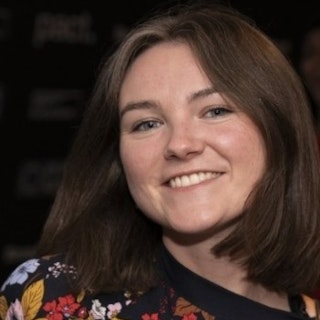Why Heineken is overspending on alcohol-free marketing
We catch up with the lager brand’s marketing manager, Stephanie Dexter, as part of The Drum’s Food & Drink Focus.

Heineken 00 sold to moderators and beer drinkers alike / Heineken
According to Nielsen data, low and no alcohol drink consumption in the UK was just 1% in 2023. Why, then, does it feel like half of the UK is chugging down guilt-free pints? Marketing, of course.
Dry January gets bigger and bigger each year, with legacy brewers and new brands such as Lucky Saint and Days all shouting about their alcohol-free alternatives.
The noise from the alcohol-free category is currently louder than the voices that are demanding it, but for good reason, says Heineken’s marketing manager Stephanie Dexter. “Heineken has a responsibility to keep growing the category and over-invest in it. Its spend is disproportional to the market share because we believe the category will continue to explode – now is the point to turbocharge alcohol-free beer in culture.”
Explore frequently asked questions
Kantar research found that 44% of 18 to 24-year-olds say that they regularly or occasionally consume low or no products, up from 31% in 2022. But consumer research on moderation is tricky to accurately assess, with people saying one thing and doing another.
Consumption of low and no alcohol beer is at 1% in the UK and market penetration is about 2.5% (according to Kantar), compared with a market like Spain where penetration is in the 10% region. Dexter says that for a market like the UK, the category still has a huge promotion job on its hands.
“We’re still at the stage where we’re trying to convince bar operators that we should even put it on draft. For us, it’s still at the very basic availability stage; it’s almost too soon to tell. We need consumers to not just say they’re not drinking but to show us they’re not drinking.”
Advertisement
Going after beer drinkers
Armed with the Kantar statistic that 99.7% of alcohol-free beer drinkers also buy alcohol, Heineken targets the same audience for its 0.0 and its original beers and keeps the brand voice consistent across both.
“People who drink 0.0 don’t start drinking Heineken, but people who drink Heineken start to drink Heineken 0.0. From a marketing strategy perspective, it’s not that complicated; we go after our core drinker base with the same tone of voice, knowing that they want to moderate different occasions.”
The top three drinking months are December, July and January, which also happen to be the top moderation months. “So, we turn off an original spin and then turn on Heineken 0.0 and then change the creative accordingly,” explains Dexter.
Heineken’s Dry January campaign from Publicis Poke is an example of how it maintains a similar style and tone across both brands. The ambition of the ‘Don’t Bale on Your Mates’ campaign, featuring footballer Gareth Bale, was to land the message that alcohol-free can help keep a night going for longer or can bring moderators back out to the pub.
Advertisement
Alison Hoad, chief strategy officer at Publicis Poke, says the campaign was informed by the stat that 30% of the UK population have made up an excuse to avoid socializing with alcohol. “It’s one of those stats that when you read it, it’s a bit like the best observational comedy,” she says. The 20-second spot showed one guy playing golf and using the excuse of ‘driving’ and another with a big pizza saying he had a lot on his ‘plate.’ “It felt like a really smart way to have a conversation that is going back to what’s true of Heineken, kind of empathetic and witty,” adds Hoad.
While Heineken’s traditional marketing strategy is the same for both booze and no booze, it does take a different approach when it comes to sponsorships. For example, messaging around its F1 sponsorship is about not drinking and driving and there is never any visibility of Heineken’s green (alcoholic) labels – it’s all (non-alcoholic) blue.
Then there is its partnership with ITV soap Coronation Street, which has a Heineken 0.0 pump installed in the show’s pub. This, again, is dedicated to alcohol-free with zero crossover with its original beer.
Suggested newsletters for you
It’s not just customers in the pub who Heineken’s marketing needs to target but the pubs and retailers responsible for stocking it. Dexter says her department’s job is “awareness and making sure that we can get it in the right places but also normalizing it in culture.”
Since around nine in 10 of all beers and ciders drank in the pub are sold in pints, says Dexter, the “holy grail” is getting Heineken 0.0 on the pump next to its alcohol version. “Whenever you see one of our brands, we need to make sure there is an alcohol-free version.”
From fast food to sloe gin, the food & drink space is massively appetizing to marketers. Join us as we dig into some of the sector’s biggest trends during The Drum’s Food & Drink Focus.
